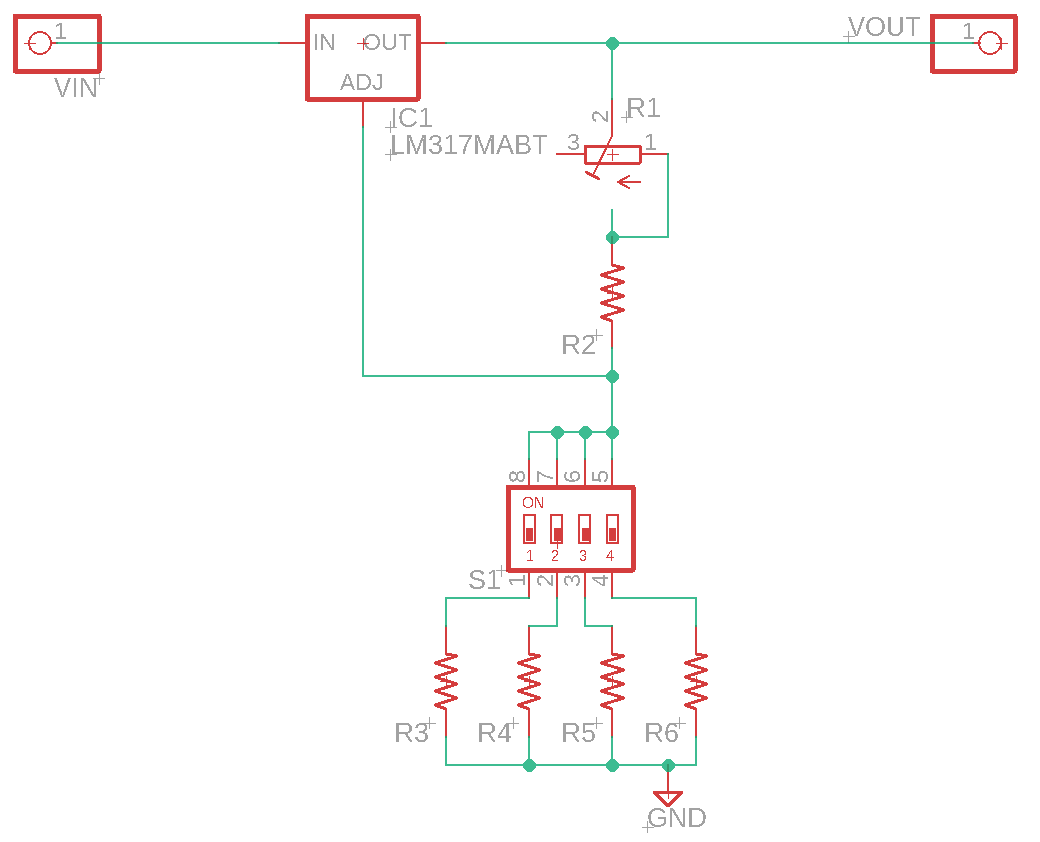I am designing an adjustable voltage regulator.
The regulator will have be able to switch between maximum Vout of 9V, 12V, 15V and 18V and will have a variable resistor that can adjust the voltage from 1.5V to its selected maximum voltage.
The problem is the amount of heat dissipated.
The input will be 21V, to compensate for voltage drop, and the max current that needs to be handled is 450mA.
Using the power dissipated formula P=(Vin-Vout)*Iout.
The power dissipated will be P=(21-9)*.45=5.4 watts.
The maximum heat that a LM317 can safely dissipate is 15 watts with a heatsink. 5.4 watts is well below that which is good but still I'd like to err on the side of caution and spread the heat across two LM317s if possible.


